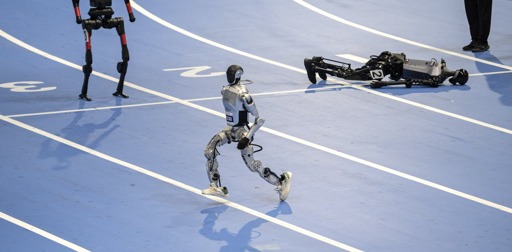Robots come in a vast array of shapes and sizes. By definition, they’re machines that perform automatic tasks and can be operated by humans, but sometimes work autonomously – without human help.
Most of these machines are built for a specific purpose: think of the puck-shaped robot vacuum or a robotic assembly arm in a factory. But recently, human-shaped or humanoid robots have increasingly entered the spotlight.
Humanoid robots are exactly what they sound like – machines with arms, legs, a torso and a head, typically walking upright on two legs. Investment in humanoid robot development has been skyrocketing recently. If you have several thousand dollars, some are already available for purchase.
But why is there so much interest in human-shaped robots? What are they good for, apart from showcases such as Beijing’s World Humanoid Robot Games or funky dance routine videos?
Uh, drop-in replacement? The flexibility to do anything designed for humans to do?
No shit there’s abundant tasks done by non-humanoid machines. Androids are a general solution.
This vision of humans in the home is so idealistic. What homes? Who is going to be able to afford that? Europeans can barely buy homes, many people are struggling to make ends meet, and they imagine people are going to buy a car, a smartphone, an AR headset, a house robot, subscriptions to 100s of services, and maybe tickets to space someday? There’s simply not enough money in the middle and lower classes anymore to pay for this stuff.
The article answers its own question. When true general purpose robots become widely available, it would be best if they were able to operate in environments created by and for humans. Robots that require tens of thousands of dollars in modifications to a building are much less attractive purchases.
But do we need general purpose robots or is the dishwasher, vacuum, toilet cleaner, ect enough as special purpose tools?
Good question. You know it’ll collect all the data it can. I don’t want (another) spy in my house.
It works in sci fi so of course it will!
Because a humanoid robot can go where humans go and interact with things humans use? Duh?
Exactly. Single-purpose robots are great for factories and stuff, where they’re doing basically the same task all day long and you can build your facility to support that. Humanoid forms allow robots to be more general purpose and slip into existing facilities designed for human workers.
Because we want to interact with them and anthropomorphize them.
Ego.






